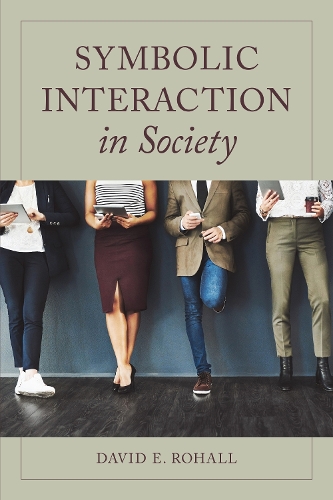
Symbolic Interaction in Society
(Paperback)
Publishing Details
Symbolic Interaction in Society
By (Author) David E. Rohall
Bloomsbury Publishing PLC
Rowman & Littlefield Publishers
3rd September 2019
United States
Classifications
Tertiary Education
Non Fiction
Social, group or collective psychology
302
Physical Properties
Paperback
296
Width 152mm, Height 228mm, Spine 11mm
363g
Description
Core text for the symbolic interaction course - often called Self and Society or Individual and Society most often taught in sociology departments.
Symbolic Interaction in Society offers a systematic application of symbolic interaction to everyday life. In addition to providing an overview of the theory and methods of symbolic interaction, it includes theory and research related to all of the relevant topics in sociology today: race and ethnicity, gender and sexuality, social institutions, and social change.
This book is written in a way that encourages students to employ symbolic interactionist concepts and principles throughout the text. Students are asked to put themselves into particular situations and consider how they would respond to the other people in that scenario. In doing so, students are able to see that human interaction is both stable and dynamic, that people can be predictable but that they also have agency, the ability to make number of decisions in a given situation. The goal is to show students the practical value of symbolic interaction for understanding their social lives today.
Key features include:
Full review of symbolic interaction concepts and theories including a discussion of the nature of society and the role of the individual in societyResearch applications of symbolic interaction examining major sociological outcomes such as inequality (race, class, gender and sexuality), deviance and mental health, social relationships, family and other social institutions, and social changeSI Online boxes include a review of how the principles of symbolic interaction apply to the effects of the Internet and modern communications on the individual and societyPersonal Notes boxes share real student applications in which students describe how they have employed symbolic interaction in their personal livesOriginal Work features one short excerpt from a book or journal article in every chapter Pedagogical devices such as chapter objectives, key terms, and end of chapter key terms and critical thinking questions guide students through each chapter
Reviews
Over half a century ago, sociologist Herbert Blumer used the term symbolic interaction (SI) to describe a theoretical approach challenging behaviorism, functionalism, and other prevailing orthodoxies in the field. Rooted in the Chicago school of sociology and American pragmatism and bearing the distinctive imprint of George Herbert Mead and Robert E. Park, this school took hold, particularly in the American Midwest. While Rohall (Missouri State Univ.) does not dwell on this history, he offers a far-ranging overview of the various currents of symbolic interaction that have arisen since Blumer. Following introductory chapters on social constructionism and methods, the remaining eight chapters take up substantive topics. As such, the book bears a resemblance to a brief, introductory sociology textbook, framed entirely in terms of one theoretical perspective. There are chapters devoted to culture, the self, socialization, emotions (less covered in introductory texts), deviance and mental health, inequality, institutions, and collective behavior. Rohall writes in an accessible manner and uses a variety of pedagogical tools, including personal notes, excerpts from original works, and chapter reviews of "SI online." The result is a book professors committed to symbolic interaction will find appealing.
Summing Up: Recommended. Lower- and upper-division undergraduates.
Author Bio
David Rohall is the Department Head and Professor of Sociology at Missouri State University. His research emphasizes the application of symbolic interactionist principles to any number of topics including self-esteem, identity, and mental health. His previous works include, Social Psychology: Sociological Perspectives, 3rd Edition (2014) and Inclusion in the American Military: A Force for Diversity (2017).
